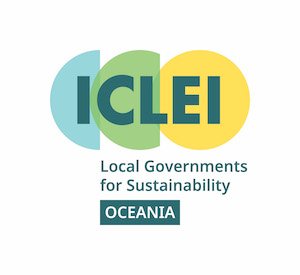Concurrent disasters, the new normal? Six months after the Australian bushfires
In Australia, councils and communities have faced compounding disasters of drought, bushfires and the pandemic, which has demonstrated the strength and importance of social systems and local leadership in times of crisis.
If managing multiple disasters at the same time will be the new normal, how can local governments and their communities simultaneously manage recovery efforts while coping with concurrent disasters? This may be a significant turning point for the reconceptualisation and reintegration of “resilience” into all aspects of local government disaster planning.
How we regroup after and during crises is the true test of resilience, but often second and third-order effects are not planned for. In a recent webinar with disaster management staff from three Australian local governments, Steve Gawler, ICLEI Oceania Regional Director, highlighted the need to better plan for and respond to cascading effects of disasters.
These cascading effects are ongoing even six months after the bushfires. Emerging research indicates that family violence has increased markedly in the worst bushfire-affected areas. Interviews with bushfire victims revealed that some men had failed to cope well with the crisis, with feelings of powerlessness, loss of purpose, responsibility and frustration.
In recent ABC coverage of bushfire survivors in New South Wales near the town of Cobargo are still struggling daily to cope with the combined pressures from the fires and pandemic.
“‘If it wasn’t for mates, or people coming down we’d have nothing,’ Trevor said. Ronnie and Trevor Eagles was one of thousands of homes destroyed when fires raged over the summer in one of the worst disasters in Australia’s history.”
The story of Cobargo shows social connectedness and mateship in Australian communities emerges in the wake of devastation, providing critical support for many people. However, clearly this intrinsic resilience alone is not enough to sustain or get people back on their feet without external assistance. Integrated support from higher levels of government and institutions working together is essential.
In northern Queensland, many rural and regional councils are used to scenario planning for extreme weather events. Councils there are now looking at increasing resilience to natural disasters by using cloud-based technology, as outlined in a recent article featuring Tablelands Regional Council:
“We wanted to modernise our systems and overcome limitations such as ageing infrastructure, and the risks of operating in a remote, cyclone-prone area. The purpose of all of that was improved stability, mobility, speed and service—and resilience,” said Sarelle Sinclair, Senior Business Services Officer.
As important as individual council actions are, external support is an essential part of networked resilience. The Queensland Government, for example, has designed a heat mapping tool in preparation for natural disasters across the 77 local government areas. So the “resilience” of local governments can also be viewed and implemented at a regional scale.
Fast forward to today, and councils face a difficult road to recovery from the bushfires and the ongoing pandemic. Local councils in Australia have limited levers for direct relief. They primarily take the form of freezing rates, providing local economic stimulus and support for the most vulnerable. This list of local government responses to the COVID-19 pandemic from Western Australia provides specific examples of these levers.
However, most importantly, there are opportunities for local governments to integrate long-term decisions in the pandemic recovery, as explained by Regional Director of ICLEI Europe, Wolfgang Teubner,
“Embedding a structural change process into the recovery process could, of course, lead to a slightly slower recovery; but this can also make recovery more sustainable and resilient in the mid- and long-terms.”
The Lord Mayor of Sydney, Clover Moore has shared similar sentiments as she explained the pandemic has forced the City of Sydney to urgently address many challenges that previously felt insurmountable, and it has also allowed them to consider long-term solutions and fast-track investment in renewable energy infrastructure.
Six months on from the bushfires, Australian cities face many difficult decisions as they focus on building back better. Even as the world shifts to a new normal of compounding and concurrent disasters, there are many opportunities to build back more resilient systems that allow communities to bounce-back stronger in the long-term.
Authors: Timothy Shue and Steve Gawler

